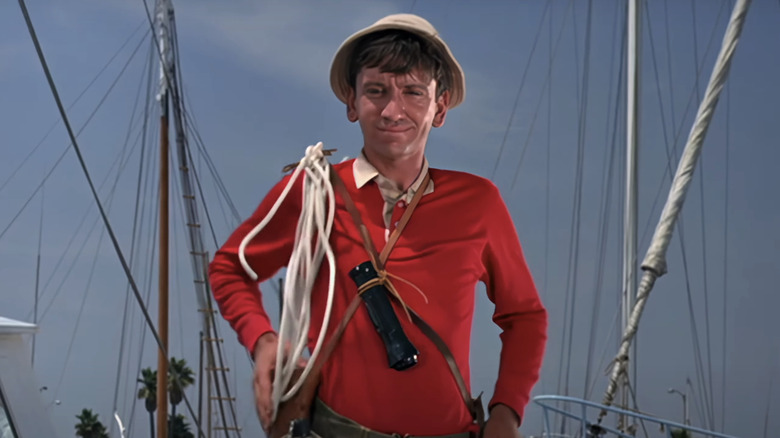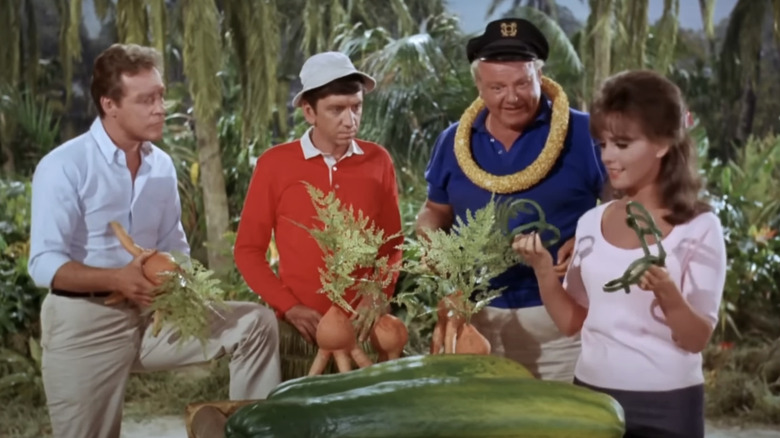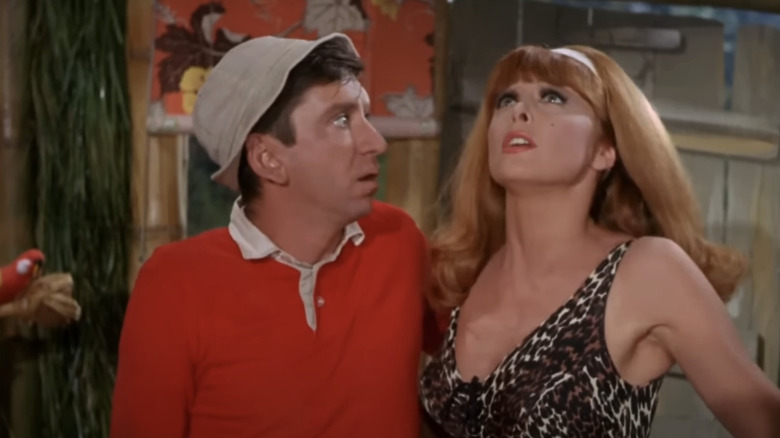When Did Gilligan's Island Start Shooting In Color?
Though it only aired for three seasons from 1964 to 1967, all 98 episodes of "Gilligan's Island" were shown in syndication for years, garnering the sitcom a devoted following that spanned generations. But if you happen to belong to the generation that saw the show when it first aired, you might recall the first season debuting in black and white.
A decade before "Gilligan's Island" hit the airwaves, NBC became the first U.S. network to transmit a coast-to-coast color transmission, broadcasting the Tournament of Roses parade in Pasadena, California across the nation on New Year's Day 1954 But the network that would later host "Gilligan's Island," CBS, had beaten NBC to the punch when it came to the first ever color broadcast in the U.S. Though it wasn't a coast-to-coast transmission like the Tournament of Roses parade in 1954, CBS's 1951 broadcast of musical variety special "Premiere" was the first ever commercial color program shown in the U.S. Broadcast across a five station network on the East coast, the program was perhaps a tad premature as nobody had the TV set necessary to actually watch CBS's field sequential color TV system at the time.
By the end of the 1950s, color TV sets were slightly more prevalent, but even then the majority of U.S. households were still watching in black and white. As the 1960s began, NBC was regularly broadcasting in color but the other networks stuck to monochrome, with CBS only broadcasting the odd special in color. It would take until the late '60s for primetime networks to switch to mostly color transmissions, and until the mid-1970s for roughly half of U.S. households to own color TVs.
So, with "Gilligan's Island" airing from 1964 to 67, it became swept up in the still burgeoning shift towards color, transitioning from shooting in monochrome to color after its first season. But if most homes in the U.S. still had black and white TVs at the time, why did CBS — which wanted to ditch the titular island from "Gilligan's Island" — make the switch?
Gilligan's Island transitioned to color fairly early
Though it was later colorized when shown in syndication, the 36-episode first season of "Gilligan's Island" aired in monochrome back in 1964. When season 2 debuted in September 1965, however, things had changed. Firstly, whereas the season 1 "Gilligan's Island" theme song had been sung by folk group The Wellingtons (who later portrayed fictional band The Mosquitos on the series), season 2 debuted with a brand new theme song. Perhaps more significantly, though, it marked the series' switch from shooting in black and white to color.
After that, the third season of the series was also shot in color, as were the three TV movies: 1978's "Rescue from Gilligan's Island," its 1979 sequel, "The Castaways on Gilligan's Island," and 1981's "The Harlem Globetrotters on Gilligan's Island" (which almost featured an entirely different basketball team). But what compelled CBS and series creator Sherwood Schwartz to make the switch to color all the way back in 1965, especially when, despite the growing popularity of color TV, America was still very much in the black and white era?
Why did Gilligan's Island start shooting in color for season 2?
It seems there are several stories as to why "Gilligan's Island" was shot in black and white for its first season. According to a fan, a special featurette included with a DVD collection of the show features series creator Sherwood Schwartz stating that it was merely down to the fact that "nothing was in color on TV." Meanwhile, however, Professor actor Russell Johnson claimed "it was just too expensive" to shoot in color.
In a way, both takes are somewhat accurate. At the time "Gilligan's Island" was airing, color represented the general direction in which TV was headed anyway. On September 24, 1961, "Walt Disney's Wonderful World of Color" debuted on NBC, introducing color to a new generation and persuading more people to go out and buy color TVs. That trend continued throughout the 1960s and both ABC and CBS decided to make the switch to color in 1965, adding "in color" bumpers to the ends of their shows' title cards. This was, of course, the same year season 2 of "Gilligan's Island" aired, so it seems the series simply ended up straddling the line between the old standard and the new.
Meanwhile, as one Redditor has pointed out, attempts to colorize the monochrome inaugural season have left much to be desired, with several commenters noting how important color was to the show once it made the switch and lamenting the desaturated look of colorized episodes. Even Sherwood Schwartz himself credited the success of "Gilligan's Island" to the visual style of the characters, which were most clearly defined by their different color uniforms. Unfortunately, Schwartz's show found itself airing just a year too early for every season to be shot in color.


